Poll: Which eco feature matters most to you when choosing peel and stick tiles?
Eco-Friendly Peel and Stick Tiles for Sustainable Style
Why Eco-Friendly Peel and Stick Tiles Matter
Most tiles look great—but what’s their environmental cost? Traditional ceramic and porcelain tiles often demand high-energy kiln firing, lengthy transportation from overseas factories, and adhesives that release harmful fumes into homes. From extraction of natural clay to the energy involved in producing grout and mortar, a seemingly simple backsplash or bathroom upgrade can carry a heavy environmental footprint.
Now contrast that with peel and stick options. Because they require no mortar, grout, or sealants, the overall resource consumption is significantly lower. No mixing buckets of cement, no extra bags of powdered adhesive sitting in a landfill. Peel and stick systems are cleaner, faster, and generate a fraction of the waste. For eco-conscious homeowners, this means the ability to remodel without leaving behind an invisible trail of pollution.
But sustainability is not just about resource savings—it’s also about indoor air quality. Conventional adhesives can off-gas volatile organic compounds (VOCs), which remain in the air long after installation. These compounds are linked to headaches, allergies, and long-term respiratory issues. With eco-friendly peel and stick tiles, adhesives are engineered to be low-VOC or completely non-toxic. This ensures the space not only looks beautiful but also feels healthy to live in.
Take the example of a typical kitchen backsplash project. Using traditional tiles involves cement-based mortar, grout, and potentially sealant products. Once complete, leftover material often ends up in a landfill where it cannot biodegrade. On the other hand, eco-friendly peel and stick tiles often arrive in recyclable packaging, use non-toxic adhesive backings, and create very little installation waste. Multiply this by thousands of residential projects each year, and the environmental savings become significant.
CTA: Explore why sustainable stick-on tiles beat traditional waste-heavy methods—See vetted eco brands
If you’re curious to see how different shades and styles can look while staying eco-conscious, check out our guide: How to Choose Green Peel and Stick Tiles. It’s a perfect companion piece to this discussion.
What Makes a Peel and Stick Tile Sustainable?
The term "eco-friendly" gets used freely in design marketing, but what actually makes a peel and stick tile a responsible choice? It comes down to three primary factors: materials, adhesives, and certification.
Use of Recycled Materials
One hallmark of sustainable green peel and stick backsplash products is the inclusion of recycled content. Some brands incorporate post-consumer glass, reclaimed PET plastics, or even aluminum into their tile panels. Instead of manufacturing new raw materials, they give existing ones a second life. Not only does this reduce landfill pressure, it also lowers energy demand since recycled materials require far less processing than virgin resources.
Low-VOC Adhesives
Adhesives are usually the biggest hidden health risk in home remodeling. Truly eco-conscious peel and stick tiles rely on adhesives that emit negligible levels of VOCs. According to the EPA, indoor air often contains higher pollutant levels than outdoors, and traditional construction adhesives are part of the problem. Choosing low-VOC adhesives dramatically reduces this hidden health hazard, creating spaces that are safe for children, pets, and anyone with sensitivities.
Certifications to Look For
Certifications act as proof that a brand’s claims go beyond slick marketing. Cradle to Cradle, for example, evaluates products across categories such as material health, recyclability, and energy use. A peel and stick tile with this certification shows that the manufacturer has committed to the entire life cycle—production, use, and disposal. Another relevant label includes GREENGUARD Gold, which validates low emissions suitable for sensitive environments.
Consider a well-documented product example: a recycled glass backsplash tile certified under Cradle to Cradle standards. Its manufacturer openly shares supply chain data, tested adhesive formulas, and an end-of-life recycling program. Transparency like this removes guesswork for homeowners weary of greenwashing.
CTA: Want to shop confidently? Download our buyer’s checklist of must-have sustainability certifications
While materials and certification ensure quality, design matters too. See our roundup of Top Peel & Stick Tile Patterns for 2025 to discover which styles align with your sustainable goals.
Top Eco-Friendly Peel and Stick Tile Brands
Not all peel and stick tiles are equal—some excel in design but cut corners on sustainability, while others invest heavily in transparency. Below are a few brands that eco-conscious renovators consistently praise.
Brand 1: Smart Tiles
Known for BPA-free materials and low-VOC adhesives, Smart Tiles emphasizes certifications and detailed ingredient disclosure. They were among the first to publish VOC test results on their website, giving customers clear data rather than vague sustainability claims.
Brand 2: Aspect by ACP
Aspect tiles include options made with recycled aluminum. Beyond styling advantages, aluminum is fully recyclable at the end of its life. Aspect openly addresses sourcing and even encourages consumers to recycle used panels through local scrap programs.
Brand 3: EcoMosaic Co.
A niche but growing player, EcoMosaic Co. proudly offers peel and stick mosaics made with recycled glass. The company conducts environmental impact assessments on shipping methods and recently partnered with a logistics provider that uses carbon-offset strategies.
Brand 4: EarthStick Surfaces
Perhaps the most notable for transparency, EarthStick Surfaces publishes full life cycle assessments (LCAs). This means they account for raw material extraction, manufacturing energy, product shipping, in-home use, and disposal. Their willingness to share impact numbers, even the less flattering ones, sets a new industry standard in honesty.
Price is always part of the conversation. Eco-friendly tiles can cost 15–30% more upfront than conventional vinyl options. But when homeowners see the balance of style, landfill diversion, and peace of mind from non-toxic indoor air, many choose to invest. Transparency and quality drive trust, making these brands feel worth the extra dollars.
CTA: See vetted eco brands trusted by real homeowners
One standout customer-favorite product is Nature’s Green Peel and Stick Tiles, which combine waterproof durability with a renter-friendly appeal. Explore these for a balance of sustainability and style.
Case Studies: Eco-Friendly Home Upgrades
Homeowners often hesitate until they see real-world examples of sustainable green peel and stick backsplash projects. Several case studies highlight how impactful these small upgrades can be.
Case 1: The Family Kitchen Revamp
Lisa and Rob, a couple with two children, wanted a modern kitchen upgrade but were worried about harsh chemicals. They chose recycled aluminum peel and stick tiles from Aspect. The installation required no grout or toxic adhesive, and Lisa later remarked, "We can cook without worrying about hidden fumes lingering in the air. That peace of mind is priceless." Environmentally, they diverted roughly 25 pounds of construction material waste compared to a traditional tile project.
Case 2: Downtown Condo Transformation
Michael, living in a city condo, needed an affordable design change for resale value. He installed glass mosaic peel and stick tiles in his bathroom. Because the product was Cradle to Cradle certified, he felt secure marketing his home as featuring eco-conscious finishes. Within two months, the condo sold above asking price. Buyers specifically mentioned the sustainable upgrades improving indoor air quality.
Case 3: The Rental-Friendly Upgrade
Sarah rented a loft apartment where permanent renovations weren’t possible. She opted for non-toxic stick on tiles with removable adhesives. She reported that besides dramatically brightening the space, the tiles gave her confidence she wasn’t exposing herself to unnecessary chemicals. When moving out, the panels peeled off cleanly, and many were recycled through a local program.
Motivations Behind These Choices
The motivations behind these case studies vary: some prioritize health, others resale, and still others convenience. Yet all share a common thread: homeowners were tired of greenwashing and wanted products backed by third-party certification reports.
Environmental Benefits Quantified
Switching to peel and stick alternatives in these homes collectively reduced installation waste by over 60% compared to cement-based tile. While numbers may seem small in isolation, scaled across thousands of upgrades, this has measurable planetary benefit. The appeal is that such progress requires no compromise on appearance—these tiles are stylish enough to make magazine spreads.
CTA: See how real homeowners achieved stunning transformations with eco upgrades—Download buyer’s checklist
For a closer look at what customers experienced, read our in-depth review: Stickwoll Peel and Stick Tiles: A Transformative Review. It showcases rental and homeowner transformations alike.
How to Choose the Right Eco-Friendly Peel and Stick Tile
Selecting the right tile requires a careful balance of design, durability, and verified sustainability.
Key Selection Criteria
- Material content: Look for recycled content or recyclable construction.
- Adhesives: Confirm they are low-VOC or independently certified.
- Certifications: Cradle to Cradle, GREENGUARD Gold, or FloorScore are signals of transparency.
- End-of-life options: Does the company take responsibility for recycling?
Matching Durability with Design
Eco doesn’t mean boring. Sustainable brands now provide a wide range of finishes: subway tile looks, marble effects, and geometric mosaics. Matching aesthetics to durability matters—kitchens benefit from moisture-resistant panels, while bathrooms require water-safe adhesives.
Avoiding Greenwashing
A common mistake is falling for vague claims such as "eco-safe" or "green approved" without evidence. Genuine eco products provide safety data sheets, recycled material percentages, and links to third-party certifications. If you can’t find those details, treat the product with suspicion.
For example, Company A might advertise “earth-conscious” tiles without explaining what that means. Company B lists that their panels are made with 30% recycled PET, have Cradle to Cradle bronze certification, and publish VOC test results. Which would you trust?
CTA: Arm yourself against greenwashing—Download buyer’s checklist for authentic eco-friendly peel and stick tiles
When choosing, you’ll also want to match durability with proper moisture resistance. Don’t miss our focused guide: Peel Stick Bathroom Tile for Moisture, which details practical solutions for bathrooms.
Cost, Value, and Long-Term Benefits
Eco-friendly peel and stick tiles are often compared to standard vinyl options. At first glance, vinyl can be cheaper. Yet cost is not the same as value.
Comparing Costs
Upfront, sustainable tile brands may cost $2–$4 more per square foot. But because installation requires no professional labor, savings quickly offset the difference. DIY-ready application puts eco peel and stick tile in a competitive price range for kitchen and bathroom remodeling.
Durability & Maintenance Savings
Vinyl options often discolor, peel, or warp within 5–7 years. Many eco alternatives last a decade or more under normal use. A homeowner who installed recycled aluminum tiles reported virtually no surface wear after eight years. Over time, replacements and repairs on cheap vinyl add up to higher costs.
Resale & Home Value Potential
Buyers increasingly look for green home upgrades. According to a National Association of Realtors survey, 48% of buyers consider eco-friendly features “very appealing.” An eco-friendly kitchen remodel doesn’t just save energy—it signals a healthier home. That can add resale momentum, giving eco projects a tangible financial payoff beyond day-to-day savings.
In short, eco peel and stick tiles deliver value by lasting longer, protecting health, and boosting property attractiveness—all while aligning with sustainable priorities.
CTA: Calculate whether eco value offsets cost—in most cases, it does
For shoppers wondering about real-world toughness, we recommend reading: Are Peel and Stick Bathroom Tiles Durable & Waterproof?. It provides expert tests and case data.
Installation Tips for Maximum Sustainability
Upgrading with eco peel and stick tiles should be efficient, waste-conscious, and free from toxic side effects.
Preparing Surfaces Efficiently
Instead of harsh chemical cleaners, use mild biodegradable soap or a solution of vinegar and water to prep walls. This ensures proper adhesion without introducing pollutants.
Reducing Waste During Installation
Measure carefully before cutting. Keep scraps organized—some can be reused for small filler areas. Package leftovers separately in case they can be donated to a community reuse program.
Recycling Old Materials
Don’t simply toss removed backsplash or wall coverings in the trash. Check local programs—many accept ceramic, glass, or aluminum materials for recycling. Even broken tiles can be repurposed in landscaping or mosaic art projects.
Pro-Tip Workflow
- Clean surfaces with non-toxic solutions.
- Pre-plan tile layout with pencil guidelines to avoid mistakes.
- Cut carefully with utility scissors or shears to minimize wasted edges.
- Apply tiles gradually, smoothing air bubbles as you go.
- Collect all scraps and recycle or donate.
Following these steps ensures your installation aligns seamlessly with sustainable goals.
CTA: Subscribe for eco-home design tips and more installation advice
After installing, maintenance is essential. Learn how to keep your tiles looking new in our Peel and Stick Tile Maintenance Guide 2025.
Conclusion
Eco-friendly peel and stick tiles offer an elegant solution to the all-too-common dilemma of balancing design desires with environmental responsibility. They deliver striking style, certified material safety, affordability through DIY installation, and measurable sustainability benefits. From recycled content and low-VOC adhesives to transparent brands that publish life cycle assessments, these products are proof that homeowners don’t have to compromise.
Whether your goal is a stunning recycled tile backsplash, a healthier indoor environment, or an eco-friendly kitchen remodel that adds resale value, the choices are here and proven.
Your next steps are simple: download the eco-tile buyer checklist, explore vetted sustainable tile brands, and subscribe for more green home upgrade inspiration.
QA Section
Q1: Are eco-friendly peel and stick tiles safe for kitchens and bathrooms?
Yes. Look for water-resistant materials and adhesives. Many sustainable brands design specifically for high-moisture zones.
Q2: Do eco tiles last as long as traditional ones?
Properly maintained, recycled aluminum or glass panels can last over a decade—often longer than cheaper vinyl alternatives.
Q3: Can these tiles be removed without damage?
Many non-toxic stick on tiles are designed with removable adhesives, especially renter-friendly models. They peel away without damaging walls.
Q4: How do I know a brand isn’t greenwashing?
Verify certifications like Cradle to Cradle or GREENGUARD Gold, and look for openly shared data on recycled content and VOC testing results.
Q5: What happens to the tiles at the end of their life?
Sustainable tile brands offer recycling programs, or the materials (like aluminum and glass) can often be processed through local recycling facilities.
Lastly, for specific areas like showers where water exposure is constant, consult our Top Waterproof Peel and Stick Shower Tiles for 2025 article.


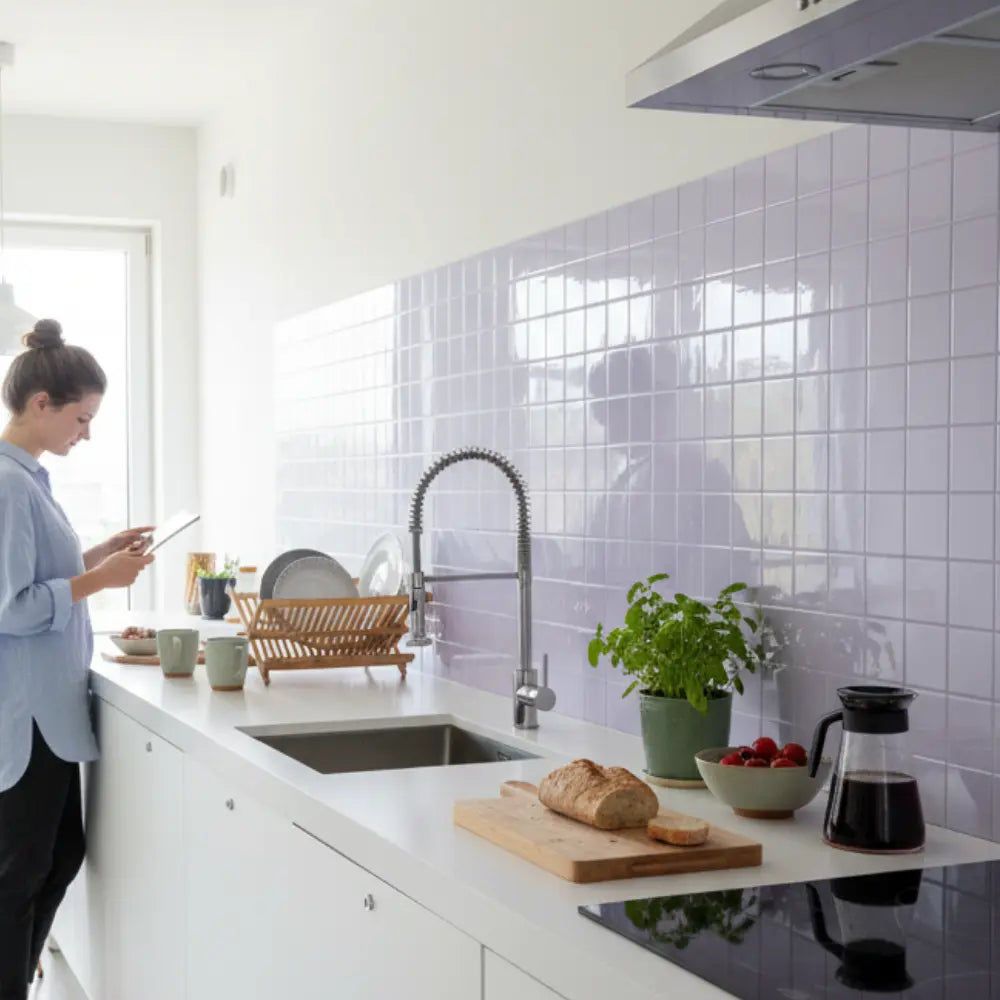
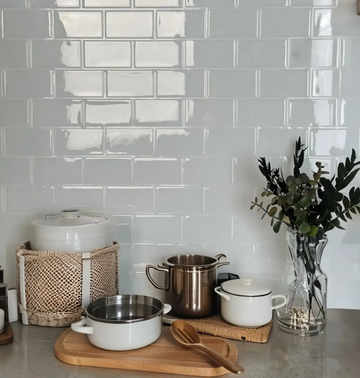
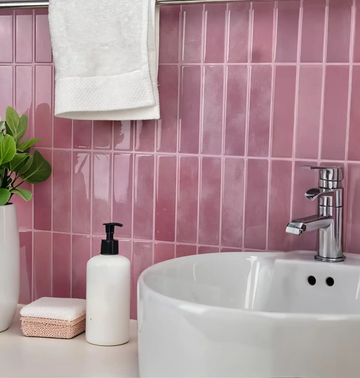
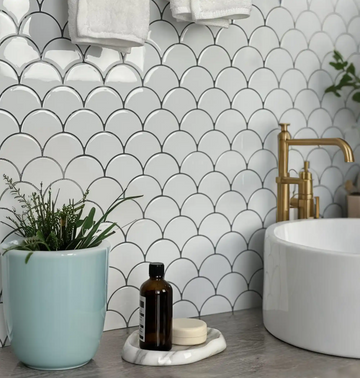
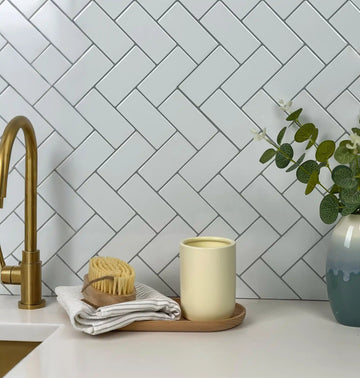
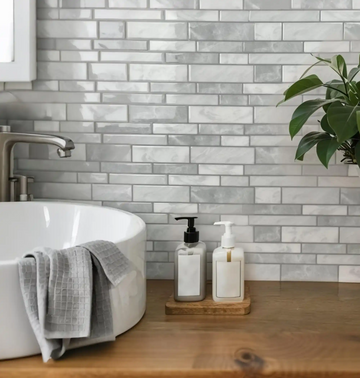
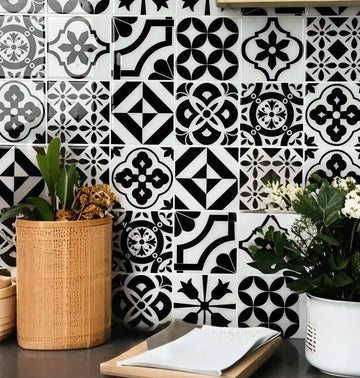
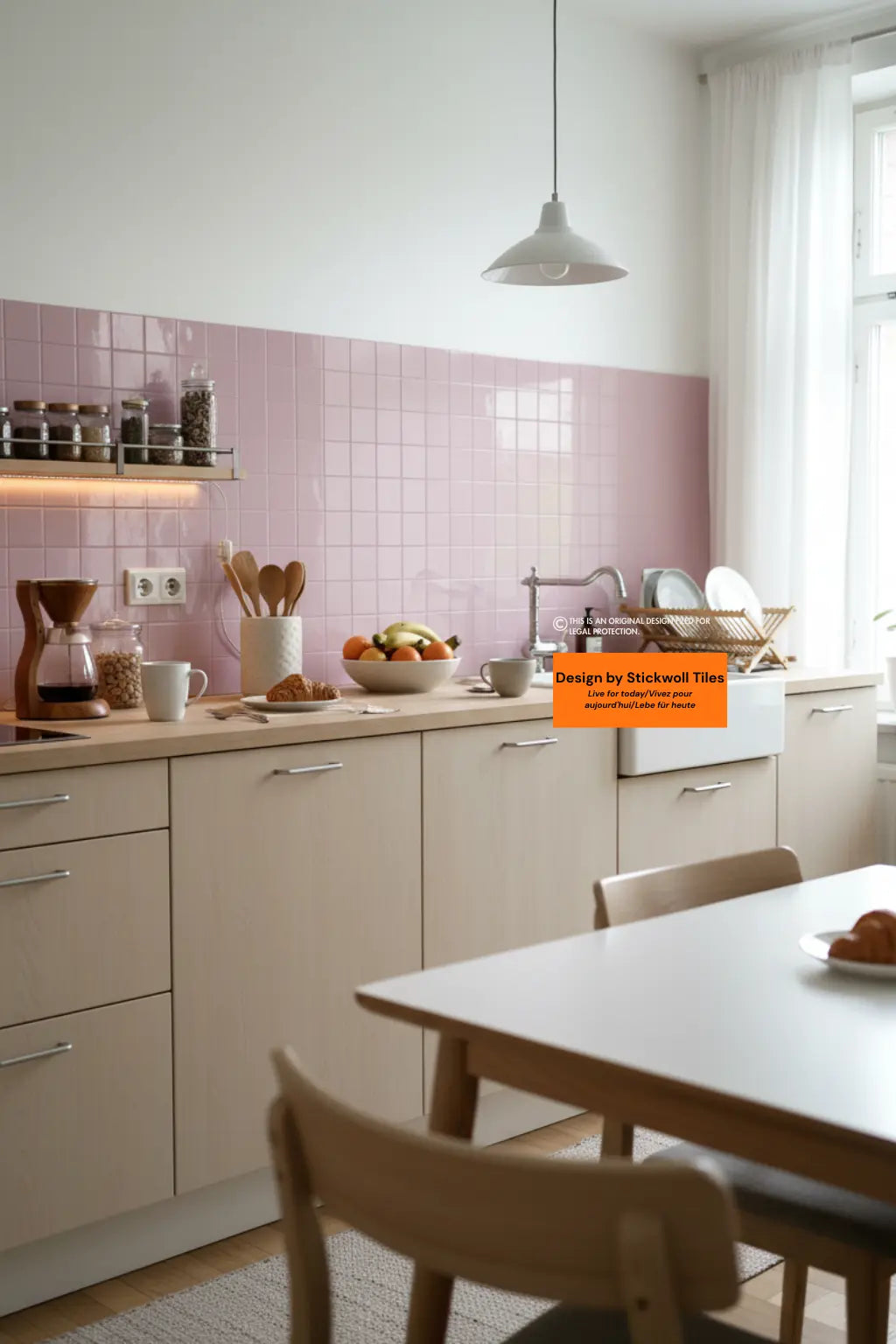
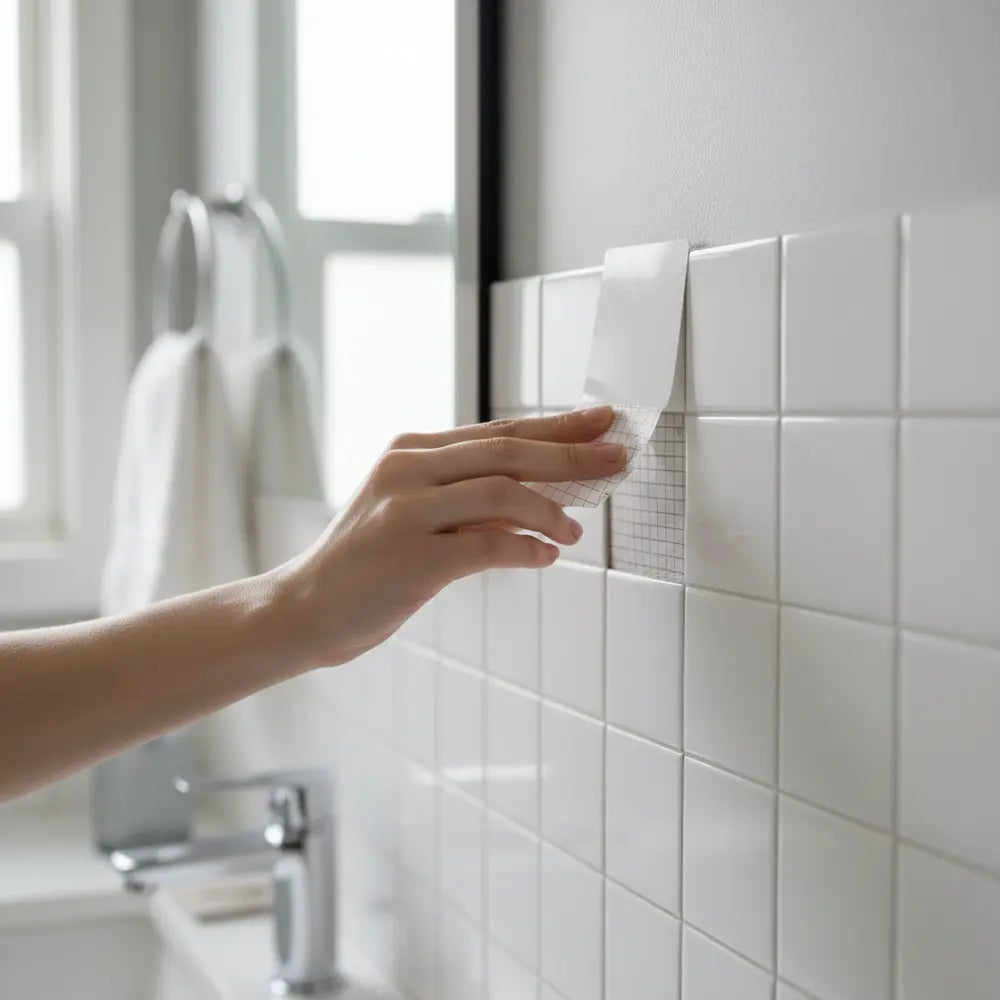
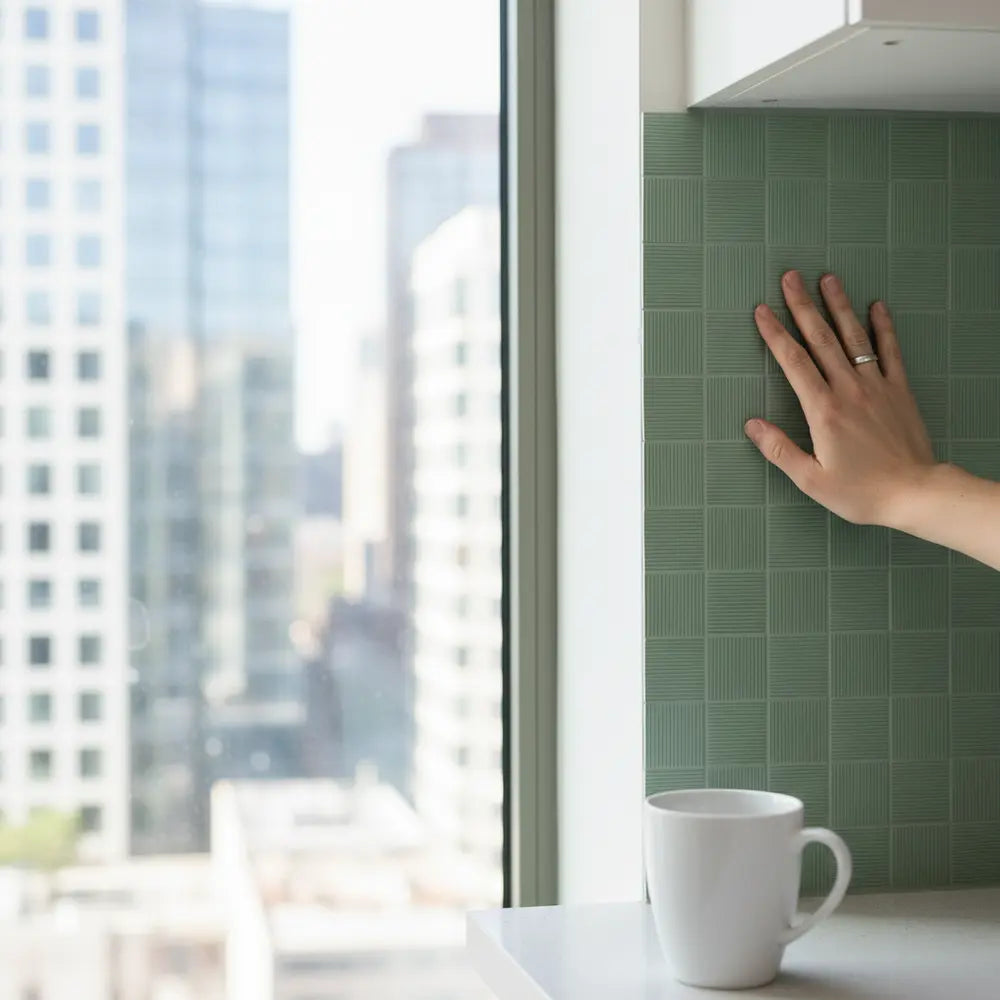
Dejar un comentario
Este sitio está protegido por hCaptcha y se aplican la Política de privacidad de hCaptcha y los Términos del servicio.